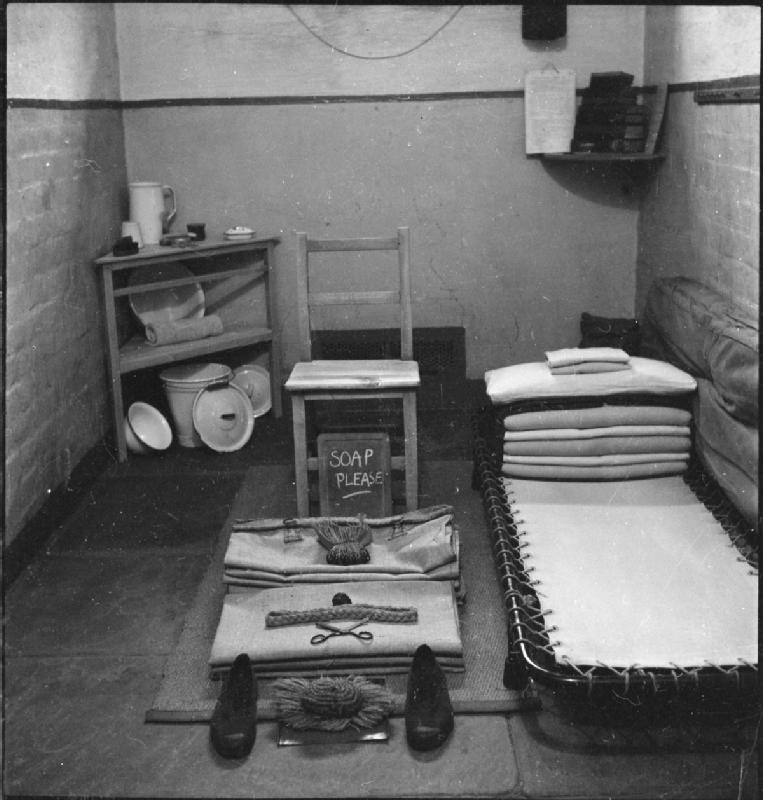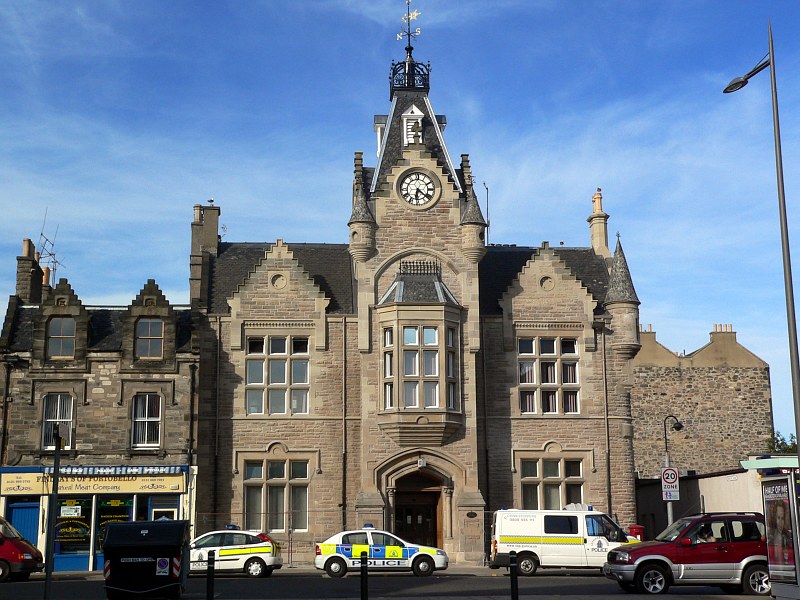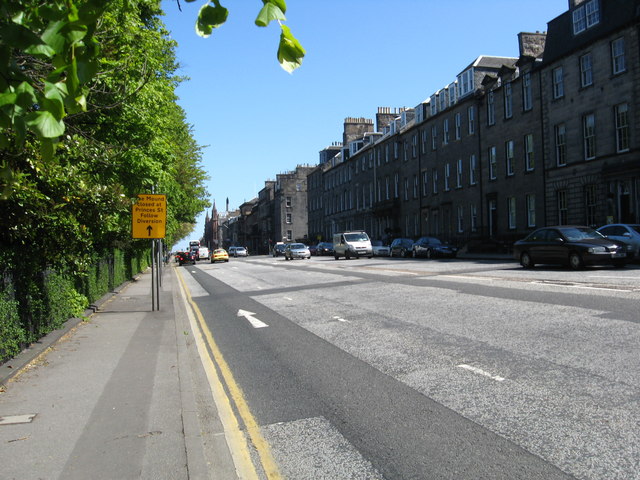|
Dionysius Wielobycki
Dionysius Wielobycki (1813–1882) was a 19th century Polish doctor living in Scotland. A controversial homeopath during a period of scientific focus, his adventurous life ranged from being a soldier in the November Uprising and being a noted astronomer to being found guilty of fraud in the British courts. He was fluent in Polish, German, French and English. Life He was born the second son of Stanislaw Wielobycki a judge and his wife Sophie Soboloska in 1813. The family had lived initially in Byten in the Wolyn region in what is now Ukraine then moved west to what is now Poland (but was then Austria-Hungary territory) in or near Krakow, where he studied Medicine. He would have spoken both German and Polish. He was a member of the Krakow Astronomical Society. In 1830/31 he and his whole family took arms in a local fight for independence from Russia (November Uprising) and recognition of their Polish identity. His father was a Captain in this resistance movement. Initially ... [...More Info...] [...Related Items...] OR: [Wikipedia] [Google] [Baidu] |
November Uprising
The November Uprising (1830–31), also known as the Polish–Russian War 1830–31 or the Cadet Revolution, was an armed rebellion in the heartland of partitioned Poland against the Russian Empire. The uprising began on 29 November 1830 in Warsaw when young Polish officers from the military academy of the Army of Congress Poland revolted, led by Lieutenant Piotr Wysocki. Large segments of the peoples of Lithuania, Belarus, and the Right-bank Ukraine soon joined the uprising. Although the insurgents achieved local successes, a numerically superior Imperial Russian Army under Ivan Paskevich eventually crushed the uprising. "Polish Uprising of 1830–31." ''The Great Soviet Encyclopedia'', 3rd Edition (1970–1979). G ... [...More Info...] [...Related Items...] OR: [Wikipedia] [Google] [Baidu] |
Canada
Canada is a country in North America. Its ten provinces and three territories extend from the Atlantic Ocean to the Pacific Ocean and northward into the Arctic Ocean, covering over , making it the world's second-largest country by total area. Its southern and western border with the United States, stretching , is the world's longest binational land border. Canada's capital is Ottawa, and its three largest metropolitan areas are Toronto, Montreal, and Vancouver. Indigenous peoples have continuously inhabited what is now Canada for thousands of years. Beginning in the 16th century, British and French expeditions explored and later settled along the Atlantic coast. As a consequence of various armed conflicts, France ceded nearly all of its colonies in North America in 1763. In 1867, with the union of three British North American colonies through Confederation, Canada was formed as a federal dominion of four provinces. This began an accretion of provinces an ... [...More Info...] [...Related Items...] OR: [Wikipedia] [Google] [Baidu] |
Dean Of Faculty
Dean is a title employed in academic administrations such as colleges or universities for a person with significant authority over a specific academic unit, over a specific area of concern, or both. In the United States and Canada, deans are usually the head of each constituent college and school that make up a university. Deans are common in private preparatory schools, and occasionally found in middle schools and high schools as well. Origin A "dean" (Latin: ''decanus'') was originally the head of a group of ten soldiers or monks. Eventually an ecclesiastical dean became the head of a group of canons or other religious groups. When the universities grew out of the cathedral schools and monastic schools, the title of dean was used for officials with various administrative duties. Use Bulgaria and Romania In Bulgarian and Romanian universities, a dean is the head of a faculty, which may include several academic departments. Every faculty unit of university or academy. The ... [...More Info...] [...Related Items...] OR: [Wikipedia] [Google] [Baidu] |
Old Bailey
The Central Criminal Court of England and Wales, commonly referred to as the Old Bailey after the street on which it stands, is a criminal court building in central London, one of several that house the Crown Court of England and Wales. The street outside follows the route of the ancient wall around the City of London, which was part of the fortification's '' bailey'', hence the metonymic name. The Old Bailey has been housed in a succession of court buildings on the street since the sixteenth century, when it was attached to the medieval Newgate gaol. The current main building block was completed in 1902, designed by Edward William Mountford; its architecture is recognised and protected as a Grade II* listed building. An extension South Block was constructed in 1972, over the former site of Newgate gaol which was demolished in 1904. The Crown Court sitting in the Old Bailey hears major criminal cases from within Greater London. In exceptional cases, trials may be referred t ... [...More Info...] [...Related Items...] OR: [Wikipedia] [Google] [Baidu] |
Dartmoor Prison
HM Prison Dartmoor is a Category C men's prison, located in Princetown, high on Dartmoor in the English county of Devon. Its high granite walls dominate this area of the moor. The prison is owned by the Duchy of Cornwall, and is operated by His Majesty's Prison Service. Dartmoor Prison was given Grade II heritage listing in 1987. History POW prison In 1805, the United Kingdom was at war with Napoleonic France, a conflict during which thousands of prisoners were taken and confined in prison "hulks" or derelict ships. This was considered unsafe, partially due to the proximity of the Royal Naval dockyard at Devonport (then called Plymouth Dock), and as living conditions were appalling in the extreme, a prisoner of war depot was planned in the remote isolation of Dartmoor. The prison was designed by Daniel Asher Alexander. Construction by local labour started in 1806, taking three years to complete. In 1809, the first French prisoners arrived and the prison was full by the ... [...More Info...] [...Related Items...] OR: [Wikipedia] [Google] [Baidu] |
Lewes Prison
His Majesty's Prison Lewes is a local category B prison located in Lewes in East Sussex, England. The term local means that the prison holds people on remand to the local courts, as well as sentenced prisoners. The prison is operated by His Majesty's Prison Service. History Lewes is a Victorian prison, built in 1853. The present day prison was constructed to replace the original Lewes Gaol which despite being enlarged in 1818 to hold 70 cells along with a treadmill had become too small. Built in 1791 Lewes Gaol was situated at the corner of North Street and Lancaster Street in Lewes. Lewes Gaol was sold to the Admiralty in 1853 to help house PoWs from the Crimean War and was finally demolished in 1963. An early prisoner at Lewes was George Witton, a Lieutenant in the Bushveldt Carbineers in the Boer War in South Africa. He was imprisoned after being implicated in the shooting murder of Boer prisoners. While imprisoned in the UK from 1902, George Ramsdale Witton wrote the book ... [...More Info...] [...Related Items...] OR: [Wikipedia] [Google] [Baidu] |
Wakefield Prison
His Majesty's Prison Wakefield is a Category A men's prison in Wakefield, West Yorkshire, England, operated by His Majesty's Prison Service. The prison has been nicknamed the "Monster Mansion" due to the large number of high-profile, high-risk sex offenders and murderers held there. History Wakefield Prison was originally built as a house of correction in 1594. Most of the current prison buildings date from the Victorian era. The current prison was designated a Dispersal prison in 1967, holding 144 inmates and is the oldest of the Dispersal prisons still operating across England and Wales. The English Dialect Dictionary indicates references to ''Wakefield'' were often short for referring to the long-standing prison (e.g. "being sent to Wakefield" meant being sent to prison). "Here We Go 'Round the Mulberry Bush" The exercise yard at Wakefield had a mulberry tree, around which inmates that were mothers used to exercise. This has been linked to the nursery rhyme " Here We G ... [...More Info...] [...Related Items...] OR: [Wikipedia] [Google] [Baidu] |
Portobello, Edinburgh
Portobello is a coastal suburb of Edinburgh in eastern central Scotland. It lies 3 miles (5 km) east of the city centre, facing the Firth of Forth, between the suburbs of Joppa, Edinburgh, Joppa and Craigentinny. Although historically it was a town in its own right, it is officially a residential Areas of Edinburgh, suburb of Edinburgh. The promenade fronts onto a wide sandy beach. History Early years The area was originally known as Figgate Muir, an expanse of moorland through which the Figgate Burn flowed, from Duddingston Loch fed by the Braid Burn to the west, to the sea, with a broad sandy beach on the Firth of Forth. The name "Figgate" has been thought to come from an Old English term for "cow's ditch", but the land was used as pasture for cattle by the monks of Holyrood Abbey and the name is more likely to mean "cow road", as in Cowgate in Edinburgh. In 1650 it was the supposed scene of a secret meeting between Oliver Cromwell and Scottish leaders. A report from 16 ... [...More Info...] [...Related Items...] OR: [Wikipedia] [Google] [Baidu] |
New Town, Edinburgh
The New Town is a central area of Edinburgh, the capital of Scotland. It was built in stages between 1767 and around 1850, and retains much of its original neo-classical and Georgian period architecture. Its best known street is Princes Street, facing Edinburgh Castle and the Old Town across the geological depression of the former Nor Loch. Together with the West End, the New Town was designated a UNESCO World Heritage Site alongside the Old Town in 1995. The area is also famed for the New Town Gardens, a heritage designation since March 2001. Proposal and planning The idea of a New Town was first suggested in the late 17th century when the Duke of Albany and York (later King James VII and II), when resident Royal Commissioner at Holyrood Palace, encouraged the idea of having an extended regality to the north of the city and a North Bridge. He gave the city a grant:That, when they should have occasion to enlarge their city by purchasing ground without the town, or to build ... [...More Info...] [...Related Items...] OR: [Wikipedia] [Google] [Baidu] |
Queen Street, Edinburgh
Queen Street is the northernmost east-west street in Edinburgh's First New Town. It begins in the east, at the Scottish National Portrait Gallery. It links York Place with the Moray Estate. It was named "Queen Street" after Queen Charlotte of Mecklenburg-Strelitz, the wife of George III of the United Kingdom and was so named on James Craig's plan of the New Town issued by the Town Council in 1768. Most early maps repeat this name but others misname it Queen's Street or Queens Street. History The street forms part of James Craig's plan of 1768 for a New Town to the north of Edinburgh's Old Town and the North Loch. This had three main east-west streets: Princes Street; George Street; and Queen Street. Queen Street was planned as a one-sided street, facing north over then fields towards the Firth of Forth. The first 30 metres beyond the road itself was originally laid out as private individual gardens to some of the Queen Street residents. Not until the opposite side was dev ... [...More Info...] [...Related Items...] OR: [Wikipedia] [Google] [Baidu] |
John Rutherford Russell
John is a common English name and surname: * John (given name) * John (surname) John may also refer to: New Testament Works * Gospel of John, a title often shortened to John * First Epistle of John, often shortened to 1 John * Second Epistle of John, often shortened to 2 John * Third Epistle of John, often shortened to 3 John People * John the Baptist (died c. AD 30), regarded as a prophet and the forerunner of Jesus Christ * John the Apostle (lived c. AD 30), one of the twelve apostles of Jesus * John the Evangelist, assigned author of the Fourth Gospel, once identified with the Apostle * John of Patmos, also known as John the Divine or John the Revelator, the author of the Book of Revelation, once identified with the Apostle * John the Presbyter, a figure either identified with or distinguished from the Apostle, the Evangelist and John of Patmos Other people with the given name Religious figures * John, father of Andrew the Apostle and Saint Peter * Pope Joh ... [...More Info...] [...Related Items...] OR: [Wikipedia] [Google] [Baidu] |
Francis Black
Francis Mollison Black (July 17, 1870 – February 19, 1941) was a politician in Manitoba, Canada. He served in the Legislative Assembly of Manitoba from 1922 to 1927, and was a cabinet minister in John Bracken's government from 1922 to 1925. Black was born in Kilmarnock, Scotland, the son of Francis M. Black, and was educated at Perth Academy and at King's College London. He joined the British civil service in 1886 and then was hired by the Union Discount Company of London in 1889. In 1892, he moved to British Columbia, where he worked for the Bank of British Columbia. Black operated on his own in Vancouver from 1898 to 1901. In 1895, he married Margaret Elizabeth McIntosh. He later joined the Pat Burns Company, working in Nelson and Calgary. Black served as president of the Calgary Board of Trade in 1916-17 and was a member of the Alberta Public Utilities Commission in 1917. He later moved to Manitoba, and became treasurer of the United Grain Growers association. Black became ... [...More Info...] [...Related Items...] OR: [Wikipedia] [Google] [Baidu] |

_(cropped).jpg)




